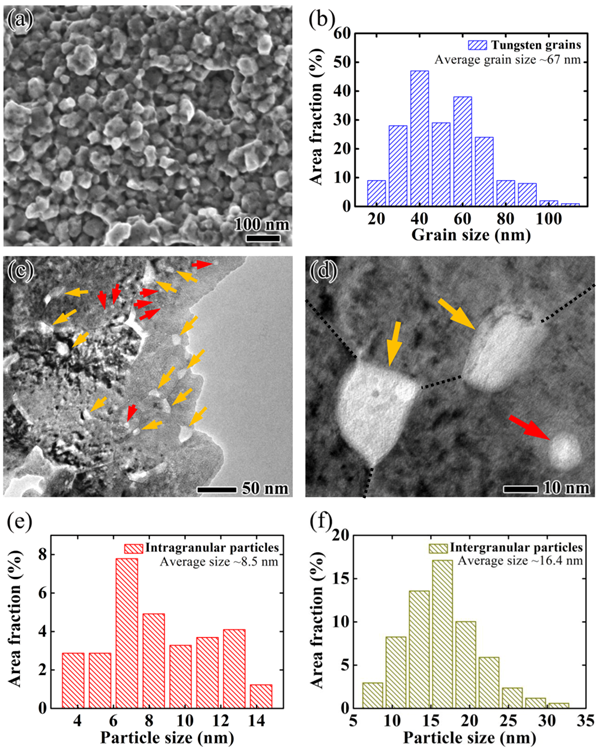[ Instrument Network Instrument Development ] Recently, Fang Qianfeng, a researcher at the Institute of Solid State Physics, Hefei Institute of Material Science, Chinese Academy of Sciences, made new progress in the development of nanostructured tungsten-based alloys, and successfully prepared high-strength doubles by pressure-assisted low-temperature densification sintering. Nanostructured tungsten material. Related work is published in the International Journal of Refractory Metals and Hard Materials.

Tungsten-based alloys are considered to be the most promising plasma-facing first wall materials that can be used in the extreme environment of fusion reactors, but the brittleness of commercial pure tungsten greatly limits its application. Oxide dispersion strengthening (ODS) is one of the effective ways to improve the toughness of tungsten-based alloys. However, the current oxide particle size of ODS-W is large, which does not achieve the desired toughening effect. In response to this problem, the researchers used the solid solution-precipitation mechanism to control the size of oxide particles below 3 nm in ODS-Fe. The double-nanostructured tungsten material was successfully prepared by pressure-assisted low-temperature densification sintering: W crystal The particle size is ~67 nm and the Y2Ti2O7 oxide particle size is ~10 nm.
The researchers first "solid-solved" Y2O3 and Ti into the W matrix by high-energy ball milling, and then densified and sintered the high-energy ball-milled W-1.0% Y2O3-0.7% Ti powder by spark plasma sintering (SPS). The sintering temperature is strictly controlled so that the nano-scale Y2Ti2O7 particles are precipitated and uniformly dispersed in the tungsten matrix. These fine second-phase nanoparticles inhibit the growth of tungsten grains, and finally realize the double-nanostructure W-1.0% Y2O3-0.7%Ti block. Preparation of bulk alloy materials. XRD and TEM results show that the average grain size of W grains is 67 nm, and the average grain size of oxide particles in the crystal and grain boundaries are 8.5 nm and 16.4 nm, respectively. The nanostructured W alloy has a micro Vickers hardness of up to 1441 Hv, which is 2-3 times that of the conventional W alloy reported in the literature. The extremely high microhardness is derived from the synergistic strengthening of nano-sized W grains and uniformly dispersed nano-oxide particles. This solution-precipitation process provides a versatile way to prepare nanocrystalline refractory metals by controlled dispersion of nanoscale oxides.
The work was supported by key research and development projects of the Ministry of Science and Technology and the National Natural Science Foundation.
Sheets Baler
Ecohydraulic baler is known for ability to process a variety of materials including factory clips, skeletons, sheet, steel cans, stampings, shapes, wire, tubing and white goods. The lid-type baler is ideally suited for baling voluminous or wear intensive scrap. The lid-style balers are most often utilized in scrap yards and industrial applications.
1) Adopt rotating cover-closing structure, large opening area of material box, especially suitable for large, empty and thin materials.
2) All moving parts are driven by hydraulic pressure and work steadily, double main pressure mode, tight and uniform beam block, high packing efficiency.
3) manual operation is simple, convenient, safe and reliable.
Metal Sheets Baler, Steel Sheets Baler, Aluminum Sheets Baler, Iron Sheets Baler, Scrap Sheets Baler
Jiangyin Metallurgy Hydraulic Machinery Factory , https://www.eco-briquetter.com
